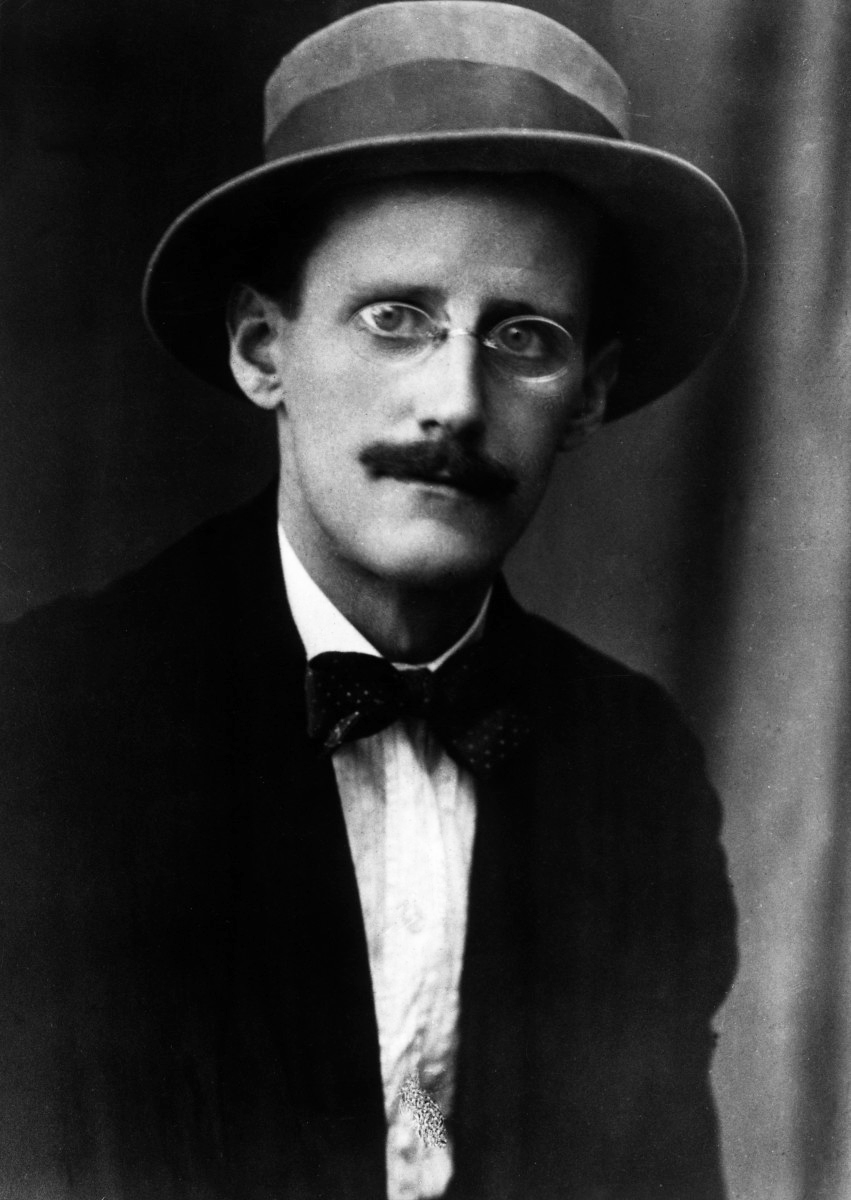Joyce, James (1882-1941), an Irish novelist, revolutionized the treatment of plot and characterization in fiction. Many critics consider William Shakespeare his only rival as a master of the English language.

Joyce was born on Feb. 2, 1882, in Dublin, Ireland, and wrote all his works about that city, though he lived outside Ireland from 1904 on. He lived and wrote in Paris; Rome and Trieste, Italy; and Zurich, Switzerland. He returned to Ireland only twice, briefly in 1909 and 1912. Joyce suffered a painful eye disease for most of his adult life and became almost blind despite many operations.
Joyce’s first major work was Dubliners (1914), a collection of stories that reflects his concern with life among the Irish lower middle class. A Portrait of the Artist as a Young Man (1916) is a largely autobiographical novel. Joyce appears as the character Stephen Dedalus. Like Joyce, Stephen finds himself in conflict with his family, the Roman Catholic Church, and the nationalistic zeal of the Irish people. And like Joyce, Stephen leaves Ireland and wishes to become a writer. In tracing Stephen’s growth to young manhood, Joyce mixed conventional realist prose with passages using techniques known as interior monologue and stream of consciousness. These techniques give the reader the illusion of following the character’s thoughts.
Joyce lived in poverty and obscurity until 1922, when the publication of Ulysses made him one of the most celebrated novelists of the 1900’s. Ulysses takes its title from parallels Joyce established between the adventures of his main character, Leopold Bloom, and those of Ulysses. Ulysses (Odysseus in Greek) was the hero of the Odyssey, a Greek epic poem. Bloom suffers ridicule because he is Jewish and has peculiar sexual tastes and because his wife, Molly, is unfaithful. He survives the pain and sorrow of his life by a remarkable capacity to absorb suffering—and even to enjoy it. Ulysses has had an enormous impact on modern world literature.
Finnegans Wake (1939) is Joyce’s most remarkable work. In this novel, Joyce portrays one family and at the same time all families, everywhere, at all times in history. The hero’s initials, HCE, stand for Humphrey Chimpden Earwicker, a Dublin innkeeper. But they also stand for Here Comes Everybody. In the story, Dublin symbolizes all cities. Joyce crammed the book with topical and historical names, events, myths, songs, jokes, and gossip. His goal was to make all people, places, things, and times repeat and resemble each other.
Joyce’s technique can be studied from the first sentence of Finnegans Wake: “riverrun, past Eve and Adam’s, from swerve of shore to bend of bay, brings us by commodius vicus of recirculation back to Howth Castle and Environs.” The book’s last sentence breaks off in the middle but is completed by the book’s first sentence. The device is a grammatical representation of the cyclic theory of history that Joyce borrowed from the Italian philosopher Giambattista Vico. The theory also provides the structure for Finnegans Wake.
The sentence quoted above traces the flow of the River Liffey through Dublin, past the Church of Adam and Eve, out into Dublin Bay and the Irish Sea. From there, by evaporation and recirculation, the water returns to the physical starting point of the book, Howth Castle. The reference to Adam and Eve introduces a major theme of the book, the Fall of Man. In Irish Gaelic, the river is called Abhainn na Life, anglicized (converted to English) as Anna Liffey. The river becomes interchangeable with Joyce’s major female character, Anna Livia Plurabelle. She symbolizes the mother of humanity.
Joyce’s other works include two collections of poems, Chamber Music (1907) and Pomes Penyeach (1927); and a play, Exiles (1918). He died on Jan. 13, 1941. James Joyce (1959, revised 1982), by the American critic and biographer Richard Ellmann, is a standard biography of the writer.
See also Irish literature.
